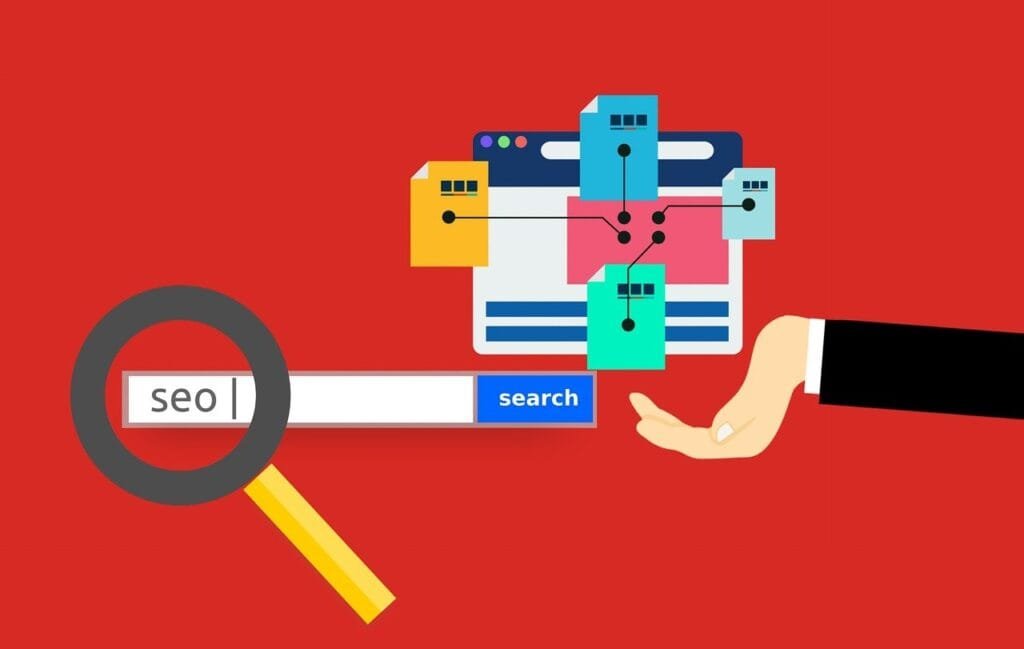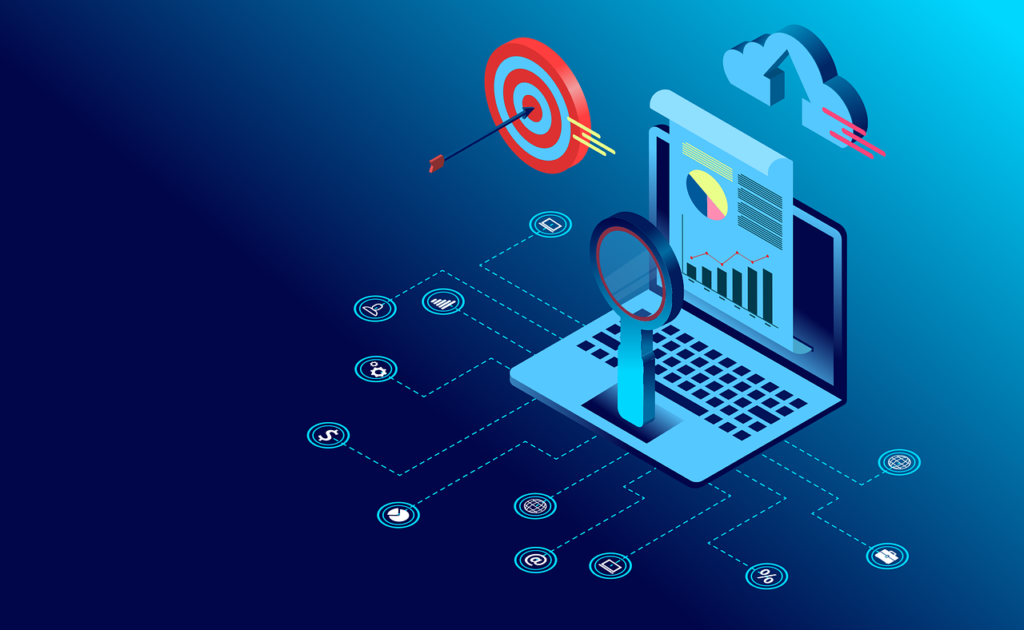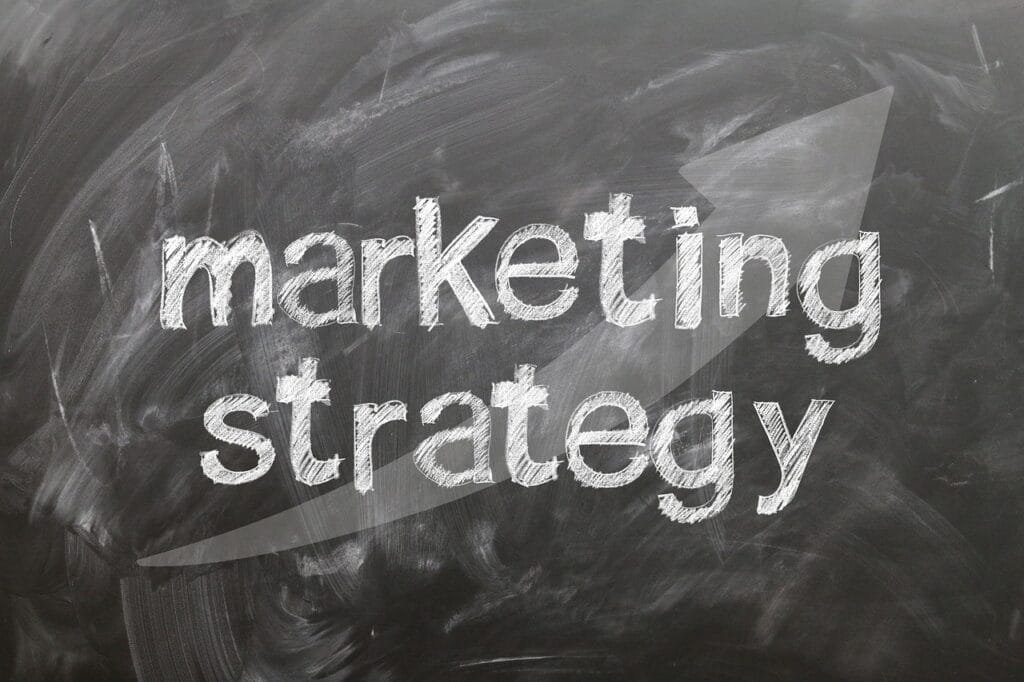This Article has been revised, edited and added to, by Poulomi Chakraborty.
- Understanding the B2B Landscape: Building Relationships vs. Quick Sales
- The Role of Digital Marketing in Long Sales Cycles
- The Power of Educational Content in B2B Marketing
- Tailoring the Message to Multiple Stakeholders
- Deepening Stakeholder Engagement
- Cultivating Thought Leadership
- Leveraging Customer Success for Sustained Relationship Building
- Prioritizing Continuous Improvement and Feedback Loops
- Strategic Content Distribution: Getting the Right Eyes on Your Content
- Optimizing Digital Touchpoints to Enhance Client Engagement and Conversion
- Understanding and Mapping Digital Touchpoints
- The Website: Your Digital Storefront
- Content Personalization: The Key to Relevance
- Social Media and Forums: Engaging Beyond Your Website
- Creating a Seamless Omnichannel Experience
- Leveraging Data for Personalized Experiences
- Enhancing Touchpoints with Technology
- Monitoring and Optimizing Continuously
- Leveraging Data Analytics and AI for Enhanced Lead Generation and Customer Insights
- Ethical Considerations and Best Practices in Data Usage in B2B Digital Marketing
- Conclusion: Mastering Digital Marketing in B2B
Navigating the complex waters of B2B digital marketing requires more than just a good product or service; it demands a deep understanding of long sales cycles and the art of building lasting relationships. In this guide, we’ll delve into proven strategies that can transform the way you approach your market, enhancing both your reach and rapport with potential clients.
Understanding the B2B Landscape: Building Relationships vs. Quick Sales

The B2B realm is markedly different from B2C markets. Here, the focus shifts from making quick sales to cultivating long-term relationships. This fundamental difference significantly influences the marketing strategies employed by B2B companies. The prolonged nature of B2B sales cycles, often stretching over months or even years, requires a marketing approach that is not just persuasive but also patient and persistently engaging.
The Role of Digital Marketing in Long Sales Cycles
In B2B transactions, decisions are rarely impulsive. They are the result of careful consideration, involving multiple stakeholders and a series of validations. Digital marketing strategies in this context serve not merely to introduce a product or service but to educate, engage, and convince stakeholders over time.
A prime example of this dynamic can be seen when comparing content marketing strategies between B2B and B2C sectors. In B2C, the content might be designed to trigger immediate purchases through emotional engagement and compelling calls-to-action. Contrastingly, B2B content is crafted to build credibility and trust, often providing in-depth information that supports a slow decision-making process. Here, content needs to perform the role of a patient educator and an expert consultant.
The Power of Educational Content in B2B Marketing
Educational content is the cornerstone of effective B2B digital marketing. It helps bridge the gap between a business’s offerings and the client’s needs. This type of content is not designed to sell overtly but to inform and assist potential clients in understanding complex products or services, which are typical in B2B markets.
For example, white papers, webinars, and detailed case studies are potent tools that can be used to educate and engage prospective clients over time, gradually leading them down the sales funnel.
Educational content works because it does more than just push a product; it offers real value to its audience. This approach is crucial in building trust—a key ingredient in any B2B relationship.
When clients feel that a company is a reliable source of information, they are more likely to consider that company a viable partner when the time comes to make purchasing decisions.
Tailoring the Message to Multiple Stakeholders
Another unique aspect of B2B digital marketing is the need to tailor messages to different stakeholders within a client organization. Each stakeholder might have different concerns and priorities, and addressing all these points is vital for successful conversions.
A CFO, for instance, will be interested in cost implications and ROI, while a technical director might focus more on the features and scalability of a solution. Digital marketing content that can address the spectrum of stakeholder interests stands a better chance of moving the needle in prolonged B2B negotiations.
The comparison between the quick, emotionally driven tactics of B2C marketing and the detailed, relationship-building strategies of B2B digital marketing illustrates the need for a nuanced approach in the latter.
Deepening Stakeholder Engagement
For startup founders, it is crucial to recognize that in B2B environments, you are often dealing with a network of decision-makers rather than a single customer. This network may include executives, managers, end-users, and even influencers within the company who can sway the purchasing decision.
Engaging with this varied group requires a nuanced approach, where understanding each stakeholder’s unique concerns and how they fit into the larger picture of their business needs becomes essential.
To effectively deepen engagement with these stakeholders, startups should focus on developing communication strategies that address both the functional and strategic needs of the business.
For instance, while a technical lead might require detailed specs and data security information, a C-level executive will be more interested in understanding how your solution can impact the bottom line or drive strategic growth. Tailoring communications to address these diverse needs not only demonstrates your understanding of their business but also builds a foundation of trust.
Cultivating Thought Leadership
One highly strategic way to build credibility and foster long-term relationships in B2B markets is through thought leadership. Startups can position themselves as thought leaders by consistently providing valuable insights and forward-thinking solutions that address industry challenges or trends. This could be through publishing white papers, contributing articles to industry publications, or participating in panel discussions at conferences.
Thought leadership allows a startup to demonstrate its expertise and commitment to the industry, rather than just its products or services. This kind of engagement is particularly effective in B2B settings because it addresses the informational needs of stakeholders at various levels of an organization, reinforcing your reputation as a reliable, knowledgeable partner.
Leveraging Customer Success for Sustained Relationship Building
Another strategic approach is to highlight customer success stories. Showcasing how your products or services have successfully addressed the challenges of similar businesses can be a powerful tool in demonstrating your capability and reliability. For startups, creating detailed case studies that walk through the problem-solving process and the benefits derived by the clients can serve as compelling evidence of their potential impact.
Furthermore, actively involving current customers in creating these success stories or encouraging them to share their experiences in testimonials can enhance credibility. When potential clients see that other companies have not only invested in your services but are also willing to publicly endorse them, it significantly boosts trust and facilitates the building of new relationships.
Prioritizing Continuous Improvement and Feedback Loops
In the B2B sector, the product development cycle should include continuous feedback from current and potential customers. This feedback loop is vital for startups as it not only aids in improving the product but also keeps clients engaged through the development process, making them feel valued and heard.
Such engagement can lead to stronger, longer-lasting relationships as clients see themselves as partners in your journey, not just end-users of your product.
By strategically navigating the complex dynamics of B2B sales and focusing on building meaningful, sustained relationships, startup founders can enhance their market position and ensure a more stable, scalable growth path.
This relationship-first approach requires patience and a deep commitment to understanding and addressing the broad spectrum of client needs, which is key to success in the B2B marketplace.
Strategic Content Distribution: Getting the Right Eyes on Your Content

The Importance of Selective Content Placement
Once you have crafted educational and tailored content for your B2B audience, the next critical step is ensuring that this content is seen by the right people at the right time. Strategic content distribution plays a pivotal role in effective B2B digital marketing, especially given the length of the sales cycles and the diverse needs of various stakeholders.
Leveraging Multiple Channels for Maximum Impact
Successful content distribution requires a multi-channel approach. Unlike B2C marketing, where broad reach can often translate into success, B2B marketing benefits from a more targeted strategy. This means identifying and utilizing the channels that your specific stakeholders frequent. For instance, while LinkedIn might be a goldmine for reaching business executives, detailed technical content might perform better on industry-specific forums or through direct email campaigns.
Social Media: Not Just for B2C
Social media in B2B marketing is often underestimated. While platforms like Instagram and TikTok are seen as the realm of B2C, LinkedIn and Twitter can be invaluable for B2B marketers. These platforms allow for the sharing of content directly to professionals and can facilitate discussions that further the trust-building process. Additionally, social media can be used to amplify the reach of your content through shares and comments, increasing its visibility and credibility.
Email Marketing: The Personal Touch
Email marketing is particularly effective in B2B settings due to its personal nature and direct reach. It allows marketers to segment their audience based on various criteria, such as industry, job role, or stage in the buying process, and send highly customized content that addresses the specific needs and concerns of each segment.
Well-executed email campaigns keep your brand at the top of the mind of decision-makers and provide ongoing value through educational content, updates on industry trends, and insights into how your offerings can solve their specific problems.
Timing is Everything
In B2B marketing, the timing of your content distribution can be as important as the content itself. Because the buying cycle is long, your content needs to be scheduled in a way that keeps your audience engaged throughout their decision-making process. This might mean aligning content releases with industry events, fiscal planning periods, or other strategic times when decision-makers are more likely to consider new solutions.
The contrast between the rapid, scattergun approach of B2C content distribution and the strategic, targeted approach required in B2B marketing cannot be overstated. In B2B, every piece of content must be crafted and distributed with precision, aiming to build a narrative over time rather than pushing for immediate action.
Mastering the Art of SEO for Enhanced Visibility
One fundamental strategy that should never be overlooked is optimizing your content for search engines. SEO can significantly increase the visibility of your content, making it easier for your target audience to find you when they are searching for solutions that you provide. Startups should focus on understanding the key search terms and phrases that their potential clients are using. Incorporating these terms into high-quality, informative content can boost your rankings in search results, drawing more organic traffic to your site.
Effective SEO involves more than just keyword stuffing; it requires a holistic approach that includes on-page SEO, such as optimizing meta tags and headers, and off-page SEO, like building backlinks from reputable sites in your industry. Ensuring that your website provides a good user experience, with fast loading times and mobile optimization, also plays a crucial role in enhancing your SEO efforts.
Utilizing Social Proof Through Strategic Partnerships
Another avenue for strategic content distribution that can be particularly effective for startups is leveraging partnerships. Collaborating with other companies or influential figures in your industry can help you tap into their audiences. By co-creating content or featuring guest posts on each other’s platforms, you can gain access to a broader audience that might be interested in your products or services.
These partnerships can also provide social proof, as they often imply a level of endorsement from the partner. This form of validation can be invaluable for startups looking to establish credibility and trust within their industry. It’s important to choose partners whose business values align with yours and whose audience overlaps with your target demographic to maximize the impact of this strategy.
Engaging in Community Building
Building and engaging with communities, whether online or offline, is another strategic way to distribute your content. Participating in industry forums, LinkedIn groups, or other social media communities can help you establish a presence and build relationships with potential clients and partners. By actively engaging in discussions and sharing your content in these forums, you can position your startup as a knowledgeable and approachable entity.
Furthermore, hosting webinars or live Q&A sessions on platforms like Facebook, YouTube, or specialized industry platforms can help distribute your content directly to interested parties. These interactions not only boost your visibility but also allow you to directly address the queries and concerns of potential clients, making your content distribution efforts more engaging and interactive.
Integrating Email Marketing for Direct Engagement
Lastly, email marketing remains a highly effective channel for content distribution, especially in B2B contexts where decisions are made over longer periods and often require nurturing. By developing a segmented email list and crafting personalized content that caters to the specific needs and stages of your audience’s journey, you can maintain engagement over time. This direct line of communication allows startups to control the narrative, timing, and context in which their content is consumed, making it a powerful tool for building sustained relationships.
Through these strategic content distribution tactics, startups can ensure that their valuable content does not just sit idly on their website but actively works towards attracting, engaging, and converting the right audience. This proactive approach to content distribution is essential for startups aiming to make a mark in their industry and drive meaningful business outcomes.
Optimizing Digital Touchpoints to Enhance Client Engagement and Conversion

Understanding and Mapping Digital Touchpoints
In B2B marketing, every interaction a potential client has with your brand is an opportunity to build trust and move them closer to a sale. These interactions, known as digital touchpoints, can range from a client visiting your website to them downloading a white paper or engaging with your posts on social media. To truly optimize these touchpoints, you need a comprehensive understanding of what they are, how they function within your sales cycle, and how they influence potential clients.
The Website: Your Digital Storefront
The significance of a website in B2B marketing cannot be overstated. It serves as your digital storefront, the first port of call for most potential clients. To make your website a strong digital touchpoint, it must be more than just visually appealing; it must be highly functional, easy to navigate, and rich with informative content. This includes having a clear explanation of your products and services, evidence of your expertise (such as case studies, testimonials, and white papers), and clear calls to action (CTAs) that guide visitors to the next steps.
Enhancing User Experience
User experience (UX) on your website plays a critical role in whether visitors stay to explore or leave without engaging further. A website with intuitive navigation, fast load times, and responsive design ensures visitors can easily find what they are looking for. Each page should be optimized for actions that visitors can take, whether it’s signing up for a newsletter, requesting more information, or scheduling a consultation.
Content Personalization: The Key to Relevance
Personalization is another crucial strategy in optimizing digital touchpoints. By tailoring the content that visitors and leads encounter, you significantly increase the relevance of their interaction with your brand. For example, if a visitor has previously downloaded a guide on a specific topic from your site, your email campaigns to them could include additional, related content, like case studies or blog posts, or even an invitation to a webinar that delves deeper into that subject.
Utilizing CRM and Marketing Automation Tools
To achieve effective personalization and timely interactions, leveraging customer relationship management (CRM) and marketing automation tools is essential. These tools help track and analyze the behavior and preferences of leads and clients, enabling personalized communication at scale. For instance, if a lead shows interest in a particular service through repeated visits to related webpages, automated tools can trigger personalized emails to that lead, offering more detailed information or a consultation with an expert.
Social Media and Forums: Engaging Beyond Your Website

While your website is central, other digital touchpoints such as social media platforms and professional forums also play vital roles. Engaging potential clients through thoughtful comments on forums, answering questions, and participating in discussions can position your brand as an authority in your field. Similarly, active social media engagement can keep your brand visible and relevant, fostering community and encouraging direct interactions through comments and messages.
Creating a Seamless Omnichannel Experience
One of the key strategies in optimizing digital touchpoints is creating a seamless omnichannel experience. This means ensuring that your potential clients receive a consistent message and experience, whether they interact with your brand through social media, your website, email, or even offline channels. Consistency breeds familiarity and trust, which are essential for long-term business relationships.
For startups, implementing an omnichannel approach can be as simple as maintaining the same tone and style across all platforms, or as complex as using integrated technologies that allow for cross-platform data sharing and communication. This ensures that no matter how or where a potential client interacts with your business, the experience is smooth and leaves a positive impression.
Leveraging Data for Personalized Experiences
In today’s digital marketing landscape, personalization is key. Using data collected from various touchpoints allows you to tailor your interactions based on the specific needs and behaviors of each client. For instance, if analytics show that certain visitors to your website frequently check your product pages but leave without making a purchase, you could follow up with targeted emails offering more information about those products, or even a limited-time discount code.
For startups, leveraging data for personalization means investing in good CRM software that can track customer interactions and preferences. This allows you to automate personalized communications at scale, such as sending customized emails on the anniversary of a client’s first purchase or after a significant interaction with your service team, which can enhance client engagement and boost conversion rates.
Enhancing Touchpoints with Technology
Incorporating the latest technologies can significantly enhance the effectiveness of your digital touchpoints. For example, using AI-driven chatbots on your website can provide instant responses to common customer queries, improving user experience and freeing up your human resources for more complex tasks. These bots can be programmed to escalate more complex issues to live agents, ensuring that your customers always receive the help they need.
Additionally, virtual reality (VR) and augmented reality (AR) are emerging as powerful tools in B2B marketing. They can be used to create interactive demos or virtual tours of your facilities, which can be especially useful for startups that operate in industries where seeing the product in action is a key selling point.
Monitoring and Optimizing Continuously
Finally, the optimization of digital touchpoints is not a one-time task but a continuous process. Regular monitoring and analysis of how potential clients interact with your digital platforms will provide insights into what works and what doesn’t. This ongoing process involves A/B testing different approaches to see which ones yield the best results and adjusting your strategies based on real-time feedback and evolving market conditions.
For startups, this means setting up robust analytics from the outset and scheduling regular review sessions to discuss performance data. It also means being flexible and willing to pivot your strategy in response to what the data tells you about your clients’ preferences and behaviors.

Related: Check out our free SEO suite

Leveraging Data Analytics and AI for Enhanced Lead Generation and Customer Insights
The Role of Data in Refining Marketing Strategies
In the world of B2B digital marketing, data is not just a tool; it’s the cornerstone of strategy development and execution. By analyzing data, marketers can gain in-depth insights into customer behaviors, preferences, and pain points, allowing for more targeted and effective marketing strategies.
Harnessing the Power of Analytics
Analytics play a pivotal role in understanding which parts of your marketing strategy are working and which are not. Tools like Google Analytics provide a wealth of information about website traffic patterns, user engagement, and conversion rates. By diving deep into this data, marketers can identify trends, such as which content pieces are driving the most traffic or what time of day most visitors browse their site, and adjust their strategies accordingly.
Segmenting Audiences for Better Targeting
Advanced data analytics enable marketers to segment their audiences more precisely than ever before. By analyzing past interaction data, marketers can create detailed profiles of their ideal customers and tailor their marketing efforts to match these profiles. This segmentation can lead to more personalized marketing communications, which are more likely to resonate with potential clients.
The Impact of AI on Lead Generation
Artificial intelligence (AI) is transforming B2B lead generation by automating complex processes and making predictive recommendations. AI tools can analyze large volumes of data to identify patterns and insights that human analysts might miss.
Predictive Analytics
Using AI for predictive analytics involves forecasting future customer behaviors based on historical data. This can include predicting which leads are most likely to convert into customers or identifying which existing customers are at risk of churn. Armed with this knowledge, marketers can proactively engage with these leads and customers with customized interventions designed to guide their decisions.
Chatbots and AI-Driven Interactions
AI-driven chatbots are another powerful tool for optimizing digital touchpoints. These chatbots can provide immediate responses to customer inquiries on your website, guiding users through the sales funnel or helping them find the information they need quickly. This not only improves user experience but also frees up human resources to focus on more complex customer interactions.
Integrating AI with CRM Systems
Integrating AI with CRM systems can significantly enhance the efficiency and effectiveness of marketing strategies. AI can help personalize the customer journey at scale, suggest next best actions for sales representatives, and automate routine tasks such as data entry and lead qualification. This integration ensures that the insights derived from AI analyses are directly actionable, enabling real-time marketing and sales decisions.
The use of data analytics and AI in B2B marketing not only streamlines processes but also provides a richer, more detailed understanding of the market. This enables marketers to craft highly targeted strategies that are more likely to result in successful conversions. Moreover, AI’s ability to learn and adapt continuously improves these strategies over time, ensuring they remain effective as market dynamics evolve.
Ethical Considerations and Best Practices in Data Usage in B2B Digital Marketing

The Importance of Data Ethics
In the digital age, the power of data is undeniable. It fuels decision-making and strategic planning in B2B marketing. However, with great power comes great responsibility. Ethical considerations around data usage are not just legal requirements but are crucial for building and maintaining trust with your clients.
Navigating Privacy Laws and Regulations
One of the first steps in ensuring ethical data usage is to be fully aware of and compliant with privacy laws and regulations, such as the General Data Protection Regulation (GDPR) in the EU or the California Consumer Privacy Act (CCPA) in the U.S. These laws provide frameworks for how data should be collected, stored, and used, protecting the rights of individuals and promoting transparency.
Consent is Key
A fundamental aspect of these regulations is the requirement for explicit consent. In B2B marketing, this means obtaining clear permission from individuals before collecting, using, or sharing their data. Consent should be informed, meaning that individuals fully understand what they are agreeing to. It’s important to communicate clearly what data you are collecting and why, how it will be used, and who it will be shared with, if anyone.
Best Practices for Data Management
Beyond legal compliance, there are several best practices that can guide ethical data usage in B2B digital marketing.
Data Minimization
Adopt the principle of data minimization. This means only collecting data that is directly relevant and necessary to accomplish a specified purpose. Not only does this help comply with legal standards, but it also reduces the risk of data breaches and builds trust with your clients.
Data Accuracy and Transparency
Ensure that the data you collect is accurate and kept up-to-date. Incorrect data can lead to poor business decisions and potential harm to client relationships. Transparency about data collection practices can also enhance trust. Clients should be able to easily find out what data you have about them, why it is being held, and how they can request corrections or deletions.
Secure Data Storage and Handling
Implement robust security measures to protect the data you collect. This includes physical security measures for on-premise storage and cyber security measures for digital data, such as encryption, strong access controls, and regular security audits. Additionally, ensure that all employees are trained on the importance of data security and know how to handle sensitive information properly.
Ethical AI Use
As AI becomes more integrated into data analysis and customer interactions in B2B marketing, ethical considerations must extend to these technologies as well. It’s important to ensure that AI systems are used in a way that is transparent and free from biases that could lead to unfair treatment of individuals.
Building a Culture of Responsibility
Ultimately, ethical data use should be part of your organization’s culture. This involves not only training staff on the legal aspects of data privacy but also encouraging them to think critically about the ethical implications of their work. Creating guidelines and standards for ethical decision-making in marketing can help reinforce this culture.
The use of data in B2B digital marketing offers incredible opportunities for growth and efficiency. However, it requires a careful, ethical approach to truly reap its benefits while maintaining the trust and confidence of clients. By adhering to these ethical considerations and best practices, businesses can ensure they use data responsibly and sustainably.
Conclusion: Mastering Digital Marketing in B2B
Navigating the intricate world of B2B digital marketing demands more than just strategic acumen; it requires a deep understanding of long sales cycles and the significance of building enduring relationships. From the meticulous crafting and distribution of content aimed at educating and engaging various stakeholders to leveraging advanced analytics and AI for deeper insights and enhanced lead generation, each element plays a pivotal role.
Furthermore, the ethical use of data not only ensures compliance with regulations but also fosters trust and reliability among potential clients. By integrating these strategies thoughtfully, B2B marketers can effectively influence decision-makers throughout the extended buyer’s journey, turning prospects into loyal customers.
This comprehensive approach to digital marketing is not just about reaching an audience but resonating with them at every possible touchpoint, thereby laying the groundwork for sustained business growth and success in a competitive landscape.
Read Next:





















